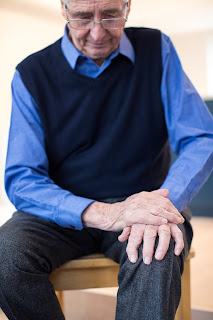BEYOND BALANCE: Parkinson's Disease and Vestibular Stimulation
Parkinson's Disease makes mobility increasing difficult and robs many of the ability to accomplish routine tasks that rely on fine motor skills such as brushing teeth or buttoning a shirt. Studies have shown that vestibular stimulation can have a positive impact on several aspects of Parkinson's Disease. /span>
Here are links to three studies:
Here are links to three studies:
- Tamlin, Belinda , Kim McDonald, Margaret Correll, Margaret H. Sharpe. The Immediate Effects of Vestibular Stimulation on Gait in Patients with Parkinson's Disease. 1993. Neurorehabilitation and Neural Repair.Vol 7, Issue 1, pp. 35 – 39
- Van Vaerenbergh, Jo & Vranken, Ria & Baro, Frans. (2003). The influence of rotational exercises on freezing in Parkinson's disease. Functional Neurology. 18. 11-6.
- Wafaa Abdel-Hay El-Kholy, Hesham Mohamed Taha, Soha Mohamed Hamada, Mona Abdel-Fattah Sayed, Effect of different modes of therapy on vestibular and balance dysfunction in Parkinson's disease, In Egyptian Journal of Ear, Nose, Throat and Allied Sciences, Volume 16, Issue 2, 2015, Pages 123-131.

____________________________________
Visit the
Practical Applications page on the GyroStim website
as a staring point to learn more about how
clinicians and researchers are using the GyroStim to provide
vestibular stimulation and sensorimotor exercise
with precision, control and repeatability.
_____________________________________
Practical Applications page on the GyroStim website
as a staring point to learn more about how
clinicians and researchers are using the GyroStim to provide
vestibular stimulation and sensorimotor exercise
with precision, control and repeatability.
_____________________________________



